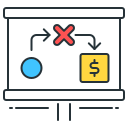Scheduling, Cost, and AI-Driven Forecasting
Machine learning models learn from weather patterns, crew productivity, and approval times to spot activities likely to drift. Instead of generic buffers, you get targeted alerts and what-if scenarios that respect real constraints. Tell us which data fields you wish you had harmonized earlier—labor hours, inspection lead times, or subcontractor mobilization dates?
Scheduling, Cost, and AI-Driven Forecasting
Linking models to time and cost transforms coordination meetings into visual, collaborative workshops. Foremen see sequencing conflicts in minutes, estimators validate quantities, and owners grasp trade-offs without spreadsheets. The result is fewer assumptions and clearer commitments. How often do you review 4D simulations, and what would make them a weekly habit for your field teams?
Scheduling, Cost, and AI-Driven Forecasting
Dashboards only work when data is consistent and timely. Connect schedule milestones, change orders, and RFIs to a single view, and highlight leading indicators, not just lagging ones. Consider a simple rule: every widget must trigger an action. Share screenshots—what metric, if improved by ten percent, would change your project’s story this month?







